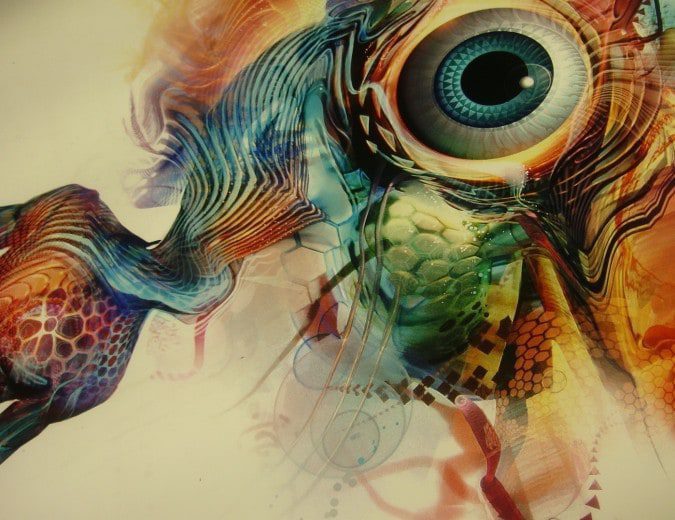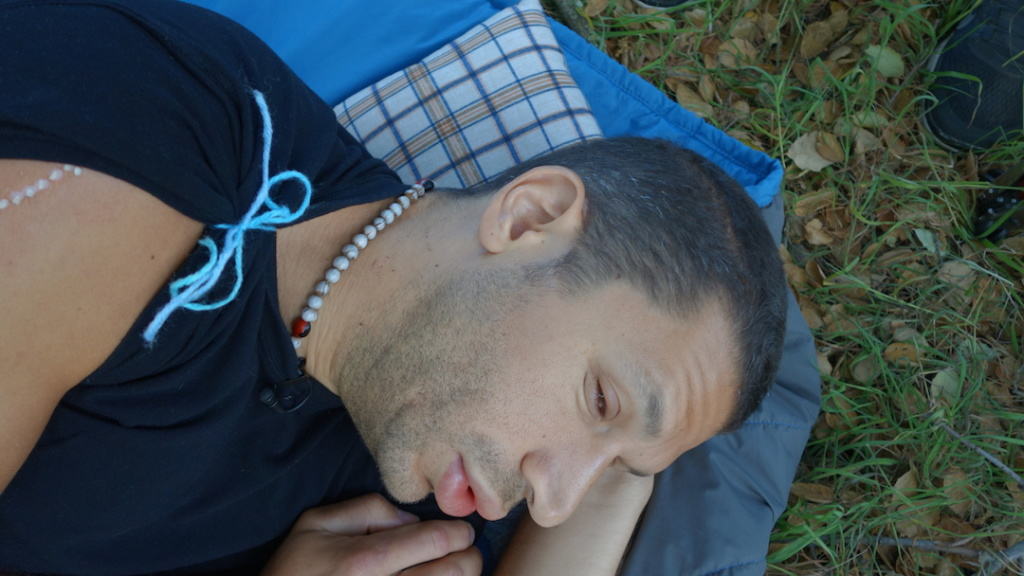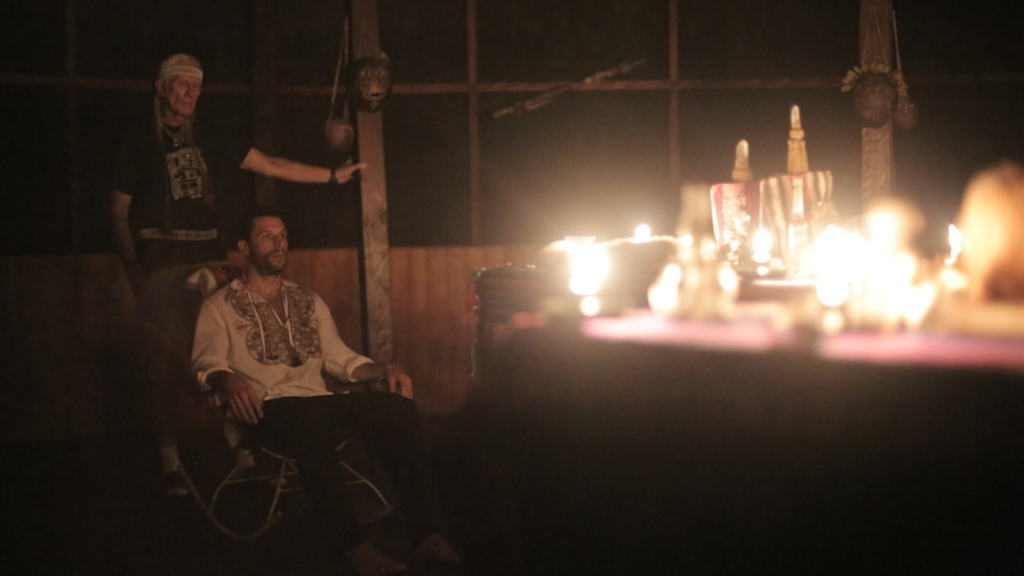Aubrey Marcus is an entrepreneur and psychedelic explorer. Please check out his blog at aubreymarcus.com.
Over the last few years as research and public opinion championing the benefits of plant medicines has proliferated, an equally disturbing trend has been developing –– not only in the news, but quietly within the community in stories that never reach the public. This disturbing trend is increasing as the supply of good practitioners is being overwhelmed by sheer demand. As thrilled as I am hearing the reports of positive transformation from the sacred plants, I am far more devastated when harm occurs that could easily have been prevented.
Below are true accounts of adherence and violation of three standards that should act as living, breathing mandates to be molded by the continued expansion of consciousness. With good practice, plant medicines can play a key role in the healing of collective suffering on the planet. With malpractice, fuel will be added to the draconian fire that keeps them from serving their purpose to humanity.
Pillar 1: Abide By the Principle of Minimum Effective Dose
Both a good shaman and a good doctor understand one concept above all others: Minimum effective dose. Plainly stated, the goal of administration of any medicine is to give the least amount possible to effect the desired result. If you have an earache, a 2 month course of intravenous antibiotics will fix it, but it is overkill (literally). If you have a headache, hydromorphone will dull it, but so would some ibuprofen. The challenge with applying this principle to psychedelic medicine is that often the desired result is not very well defined by the patient.
The first step is to know what you are trying to achieve. Are you trying to cure a heroin addiction, or find a different perspective to help you make good decisions? Are you trying to battle a lifelong depression or open up your heart and mind to a higher consciousness? The answer to those questions should determine not only the type of plant medicine you seek, but also the dosage used.
Malpractice
One overcast morning I make my way to Topanga Canyon to receive the Frog medicine known as kambo. I am met by a one hundred percent well intentioned couple, with a religious reverence for the medicine. The process of kambo intake involves burning the skin with a hot stick in a series of dots known as ‘points’. Then the kambo resin is applied in dots on the open burns. As a testament to the fervor for the practice, the ‘shamans’ have point scars covering much of their legs and arms. Like a badge of honor, they proclaim that they are running out of virgin flesh to burn. As we make our way down to the location, the head administrator, who came across the medicine as a tourist one stormy night in Colombia, asks me how many points I want. How the hell do I know? He says he feels like 11 is going to be a good number. It had some bullshit new age cosmic significance. With no point of reference (no pun intended), I shrug my shoulders and submit to confidence.
Once administered my body goes into anaphylactic shock. My face swells, I vomit for 60 minutes straight, but what is worse, my throat is nearly swollen shut. I am breathing out of an esophagus shrunken down to a cocktail straw. A few more points and I’m relying on a South African wildlife wrangler to perform an emergency field tracheotomy or I’m dead. For the next 3 weeks I feel like I have been poisoned. Trying to find some answers, I reach out to some traditional practitioners who carry the lineage of the medicine. I tell them I received 11 points. They are stunned. Under no circumstances do they administer more than 5 points in an initial session. I crossed the line where medicine became poison. Eventually the dark cloud lifts and I am able to resume a healthy life.
It is not enough to carry the medicine simply because you have a good heart. You better have a healthy respect not only for what good the medicine can do, but what harm it can do as well. Everything on the planet has an LD-50, or a lethal dose for 50% of the population. Nothing is of Holy origin, and there are no Panaceas. Not only did the frog shaman fail to give me a dose suitable for my intentions, he crossed the line where medicine became poison. The old aphorism speaks loudly; “The road to hell is paved with good intentions.”
Good Practice
I am about to do Iboga with a 10th generation Bwiti Shaman. He gives me one pill, and then rambles on for about 2 hours before giving me a second pill. Before I can feel anything other than restless, he has me lie down on a grungy mattress. He puts a blindfold over my eyes and asks me to envision myself on the moon. I tell him I can’t see anything. He insists that I see myself on the moon. I insist I can’t visualize anything. He is more stubborn than I am. Finally I can kind of imagine myself on the moon. He continues to give me prompts until finally my grandmother appears on the moon and she helps me answer the most important questions in my life. I still can’t ‘feel’ the Iboga at all. He taps me on my head with a smile and says, “Remember, you don’t need medicine to do this.” About 30 minutes later Iboga kicks in and I have one of the most uncomfortable, but powerfully enlightening experiences of my life.
The Bwiti shaman demonstrated a perfect execution of the concept of minimum effective dose. The shaman could have blasted me with a couple of pills right off the bat, and something strong would have happened. But he made sure to give me the minimum amount of iboga necessary to have the kind of experience I wanted to have, while at the same time setting the goal that eventually I wouldn’t need to take the medicine at all. Remember, the goal is not the experience, but the result.
On the previous night, this same shaman gave a heroin addict a dose that was 3-4 times larger than mine. That was the minimum effective dose to treat his heroin addiction. One week prior, an Englishman came down and the shaman decided that he wasn’t ready to get ANY medicine. He was still hanging around asking to get medicine by the time I left. This is mastery of the concept, and the vital attribute for any good practitioner.
Pillar 2: Pre and Post Op Care. From Preparation to Integration
Psychedelic ceremonies can and should be likened to psychic surgery. The intensity and quality of the surgery determines the pre and post operation standard of care. Some principles apply universally however, such as informing your ‘doctor’ (guide, shaman, or practitioner) about any pre-existing conditions or medications. If whomever is providing the medicine does not take this step seriously, that is a MAJOR red flag. It means they do not have a healthy appreciation for the medicine they are providing. Below are some analogies comparing the major plant medicines to some respective medical procedures, for purposes of illustrating the gravity of the experience.
Eating some marijuana is like caring for your own wound. Have some respect for the process, know when you are getting in over your head, and don’t plan anything too stressful for a while. Very little post op care or integration is usually needed, but listen to your body.
A serious mushroom or huachuma experience might be more like arthroscopic surgery. You are going to want to make sure you come in with an empty stomach, have someone there with you during your experience and give yourself a few days of monitored recovery (integration) time. I find that the key to good integration is time by oneself to gather thoughts, establishing a connection with nature, and a healthy amount of writing or journaling.
When you are talking about ayahuasca, now you are talking about the severity of removing a tumor. You better research the surgeon (shaman), look up his/her reviews, talk to his other patients if possible; be completely thorough in all matters. This is not a medicine to be treated lightly. The preparation diet, or ‘Dieta’ as it is called, is vitally important, and the integration time on the other side is not suggested, it is mandatory. You should also be very clear on your intent, and be following the ayahuasca path in response to a calling. An irresistible attraction to the medicine, that goes far beyond fascination or curiosity. There are three centers I can personally recommend: Temple of the Way of Light, Spiritquest Sanctuary, and Maestro Orlando Chujandama.
If you are talking about ibogaine, that is like a bone marrow transplant. First of all, you should get really clear on why you are doing it. While I was able to successfully have an iboga experience simply for greater spiritual and philosophical understanding, I have seldom seen that duplicated. More frequently it has been either confusing or dangerous. Unless you have a serious need, iboga may be (to borrow a metaphor from Aldous Huxley) “burning your house down to bake a loaf of bread.” Secondarily, prior to any iboga experience you should be checked for pre-existing heart conditions, and follow a strict liver and kidney detox protocol prior to participation. Tertiarily, give yourself at least one week of fully monitored care after an iboga flood. The shaman or doctor should be with you or on call for the first two days at minimum, and someone in a ‘nursing’ or care capacity should be physically with you 24/7 for the remainder of the week. The combination of central nervous stimulation, psychedelic activation, and sleep deprivation makes it vital to remain in immaculate, qualified care.
Good Practice
A shaman with 50 years experience administering medicine carefully screens applicants for a traditional San Pedro (huachuma) journey. On the night of the first mesada, a young athletic gentleman becomes delusional. He feels that everyone is out to harm him. He decides that he isn’t worthy to live. He reaches in a cry for help for a ceremonial antique saber. Members of the group stop him and send him positive reinforcement. Everyone pulls together to help him through the night. The shaman sends his best caretaker to follow the man to his room, and set up a hammock outside his door to make sure that he will be okay throughout the night. No more medicine is administered to the young man that week, and he is given the opportunity to integrate soberly with the group.
A shaman of less integrity might have kicked that young man off of the property, so that he wouldn’t be liable for any harmful acts that he might do. This would ensure that the experience left a deep scar on his psyche, and potentially place him at greater risk. A practitioner is responsible for the journeyer both during and immediately after any experience. Anything less is malpractice.
MalpracticeKevin the ‘shaman’ wraps up an iboga ceremony with a strong, virile man named Benjamin who has had some experience with the root before. The night was extremely intense, and taking place at the young man’s house, Kevin is the only other person in the home at the time. The morning after the ceremony, Kevin asks Benjamin how he is feeling. Benjamin, who hasn’t slept in 24 hours, and not wanting to show weakness to his guide responds that he is doing alright. Kevin decides it is okay to head to his own house to get some sleep of his own. He leaves Benjamin in the house by himself. That next night Kevin’s phone rings, and it is Benjamin. He still hasn’t fallen asleep (not unusual for a strong Iboga flood) but ‘shaman’ Kevin sleeps through the phone call. Since the process was technically illegal, and very few people would understand, Benjamin has no one else to call. The sleep deprivation and withdrawal of amphetamine is leaving the normally strong Benjamin a bit shaky. He just wants the experience to end. He looks in the nightstand and finds a sleeping pill. Two days later Benjamin is found in a coma and rushed to intensive care with kidney failure and severe dehydration.
This example, while extreme, is based on true events. The practitioner must know better than the patient. It is difficult to ask for help, and if you make someone ask, it might be too late. There is no wiggle room with a medicine like iboga or ayahuasca.
Pillar 3: Control your set and setting
There is a reason that surgeries are performed in hospitals: They are clean environments, they minimize interruptions by controlling entry to the space, and allow for 24/7 monitoring. Continuing the metaphor of psychic surgery, the same principles apply.
A Clean Environment
By nature a psychedelic experience is going to bring you to an altered state of consciousness. In that state, you are going to be far more vulnerable to risks incumbent within your setting. Is it wise to undergo a psychedelic experience in a field riddled with ant hives? Unlikely. Is it wise to have a psychedelic experience in a graveyard you snuck into? Unlikely. You want to be contained in a space that is free of the dangers of physical harm as well as psychic interference (even if you don’t believe in things like other entities). Thoughts have power, and in a psychedelic state if you are convinced you are being tormented by a ghost, there might as well be one there.
Minimizing Interruptions
One of the major reasons why I only recommend doing psychedelics in legal settings, is that inherently it removes one of the major risks. Namely a bunch of corn fed, fired up cops busting in to haul you off to prison. A good set and setting minimizes the chance of interruption, just as a hospital does. Sure, there are acts of God or Godzilla that could interrupt anything, but your chances are minimized.
Even if the cops don’t come you want to be in a place where you are not subjected to people who are insensitive to your state of consciousness. This is a reason why it is not recommended to take heavy doses of psychedelics in places where people are actively lowering awareness through alcohol, cocaine, or Taco Bell. They will be like an instrument out of tune in a symphony. Their strident wavelength will make it hard to focus on anything else.
24/7 Monitoring
Psychedelics journeys can be likened to a scuba dive. If you are going into deep, unexplored waters, it is best to bring a guide who knows the terrain. But even if you are going on a shallow dive in a place you have been before, it is always good to bring a friend, or have someone waiting in the boat. At the very least, you will have someone to share the experience with and remind you of how you felt and what you learned when the brilliance inevitably dims with time.
Psychedelic medicine has been a constant ally in my life. But as my relationship deepens with each of the sacred plants, I grow more reverent of not only of their power to heal, but potential to harm. These pillars are simply the basic guidelines, and I put them out with the intent that they will be proliferated and improved upon. If you or anyone you know is interested in a psychedelic experience, please share this with them. And if you see them heading off on a path that raises any red flags, do everything you can to let them know. We owe it not only to each other, but to the success of the movement as a whole.


